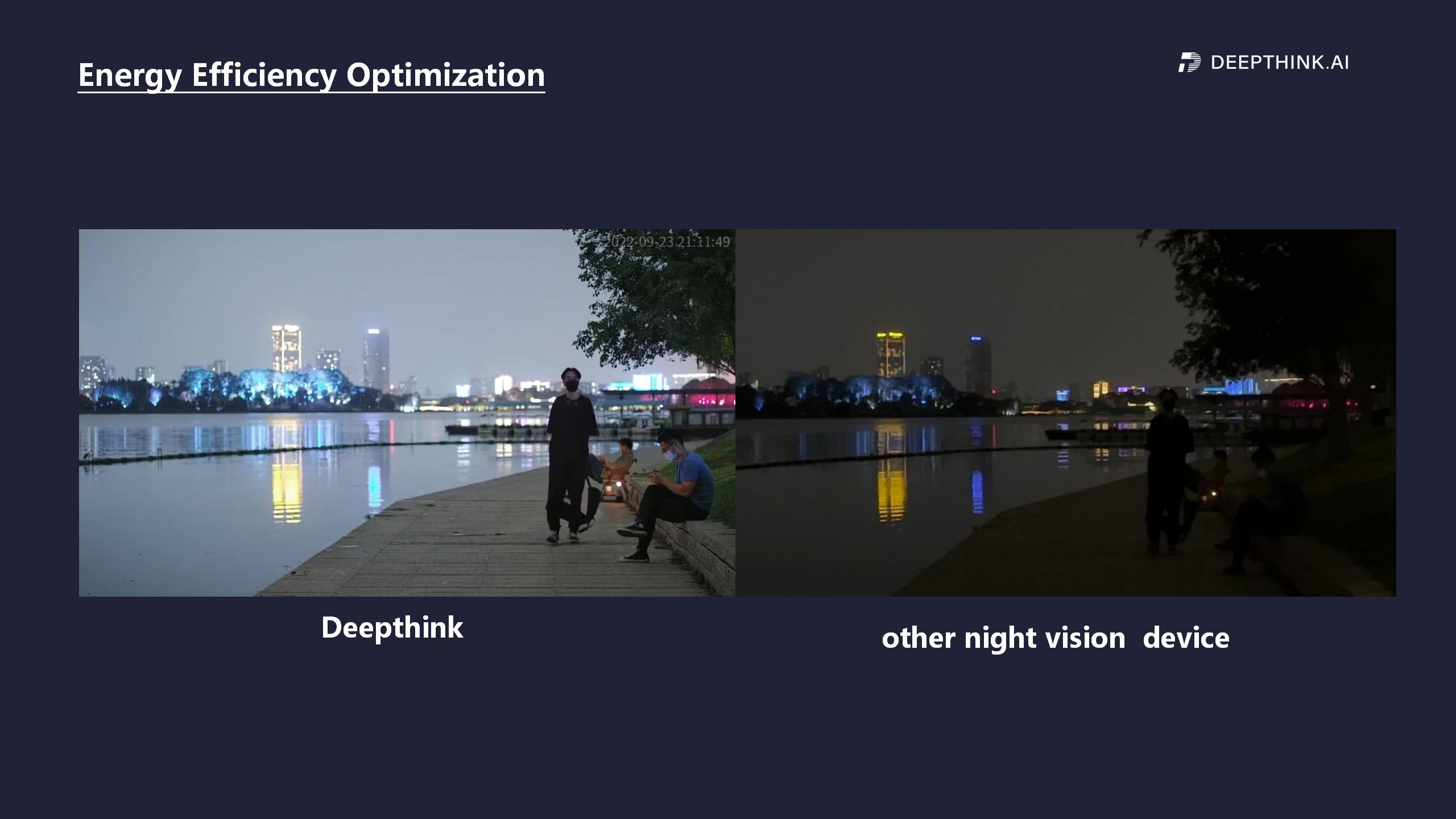-
The difficulty of implementing AI in Image Signal Processors (ISP) can be viewed from many perspectives, such as complex algorithms and computational requirements, requiring large mounts of image data for model training, and effectively integrating AI algorithms into ISP involves considerations of hardware resource constraints, power consumption control, and compatibility with existing signal processing workflows.
Deepthink has surpassed the limits of technology and overcome numerous challenges. ZHIYING® AI ISP technology has several advantages as following:
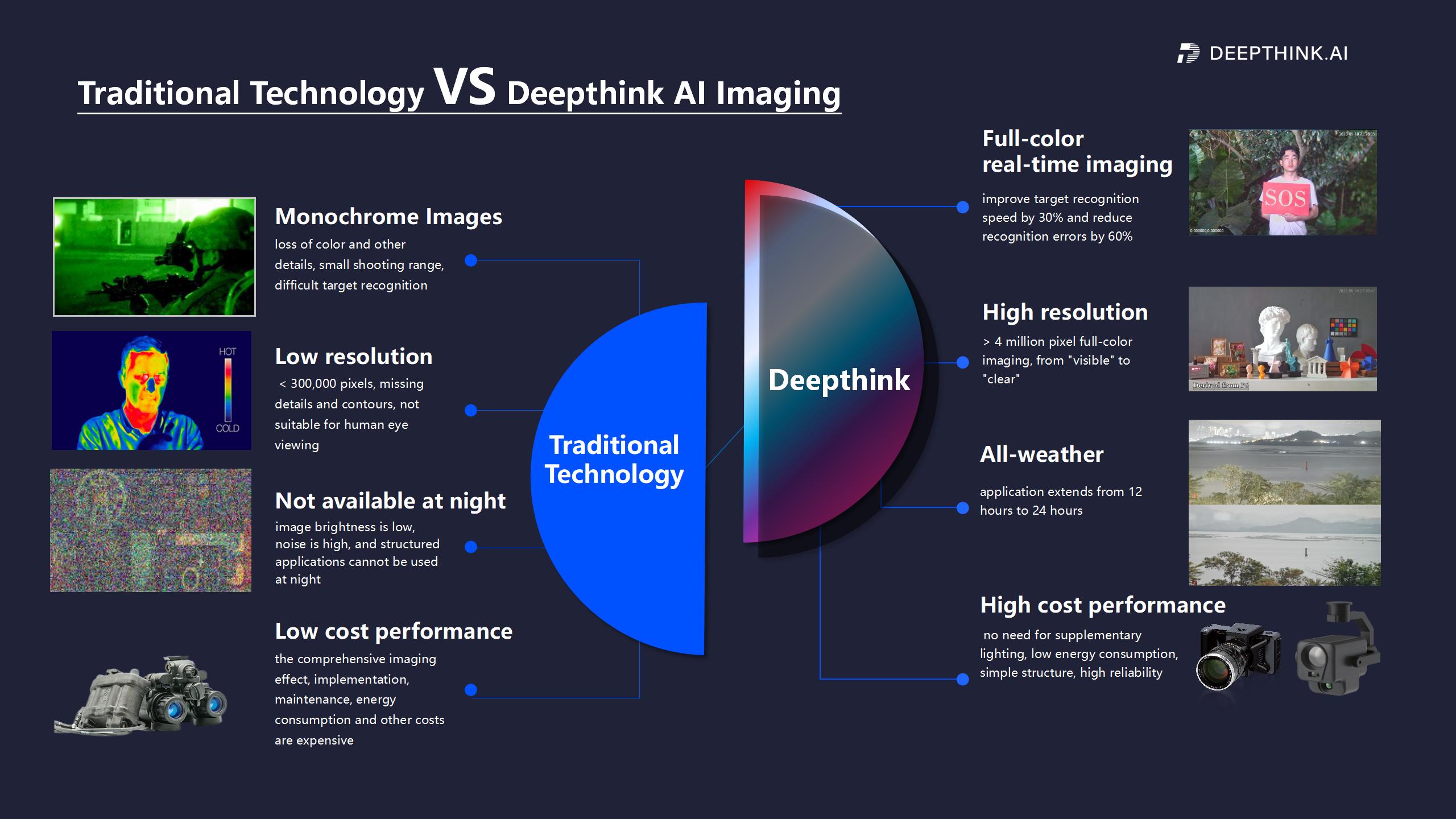
Super Sensitive Noise Reduction in low-light environment
Night vision technology requires capturing images in extremely low light conditions, often necessitating the use of highly sensitive sensors and low-noise signal processors.
Based on the analysis of ultra-low-light (visible light: 380-790nm) environmental image signals, ZHIYING® AI ISP uses neural network deep learning to distinguish the distribution characteristics of noise and signal. We have trained a deep learning AI algorithm that can separate noise from real signals in ultra-low-light signals, while enhancing the real signals to normal light environment intensity. The signal-to-noise ratio can be improved by up to 25dB, achieving normal imaging in extremely low-light environments.
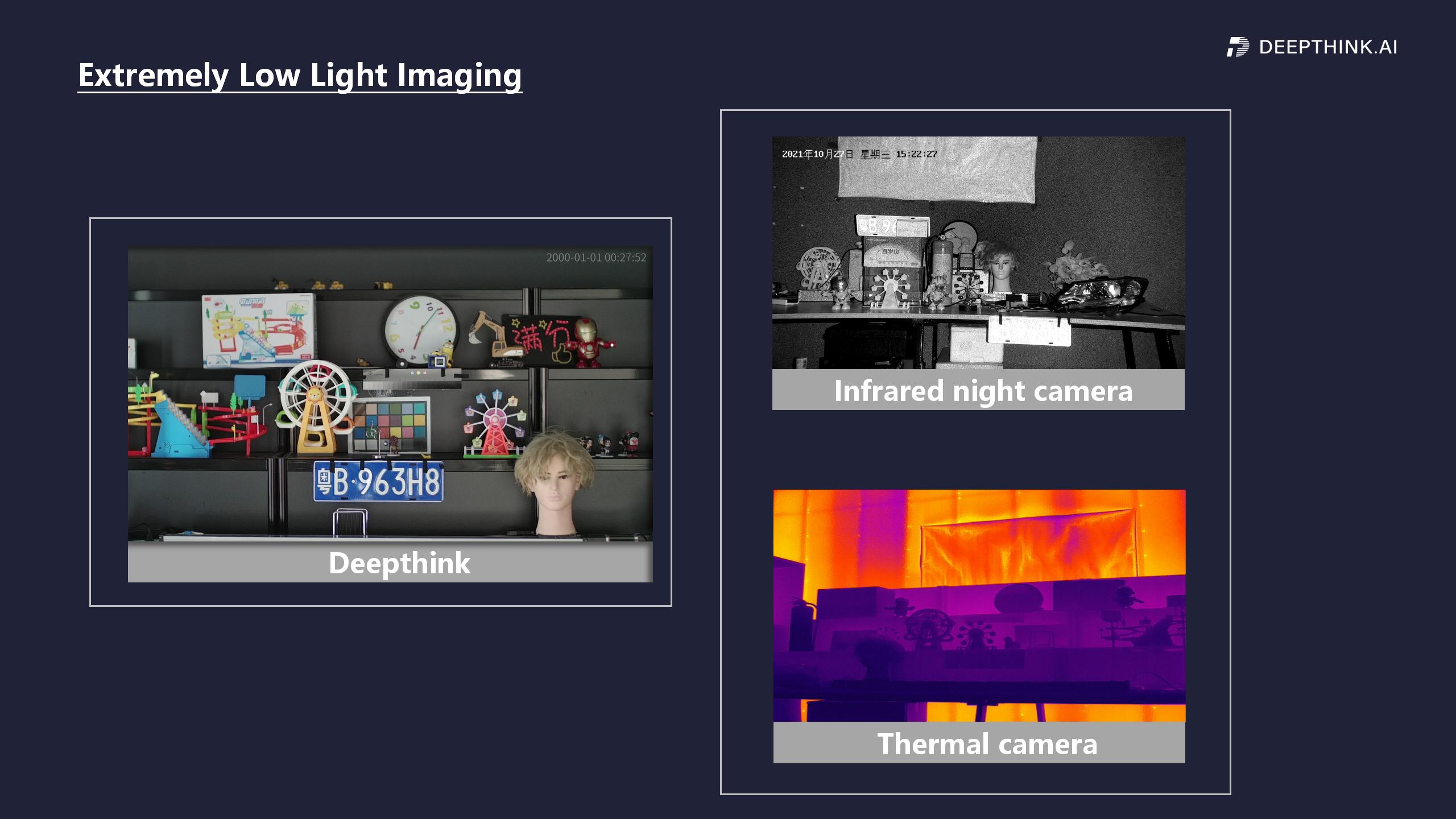
High-quality Full-color Imaging Effects
Traditional color imaging techniques may struggle to accurately reproduce colors in low-light conditions, requiring advanced algorithms for precise color reproduction.
Building upon the foundation of ultra-low-light imaging technology, Deepthink analyzes and utilizes the color characteristics of image signals through neural network deep learning, enabling us to obtain high-definition, high-quality full-color images even in extremely low-light environments as low as 0.0001 lux.
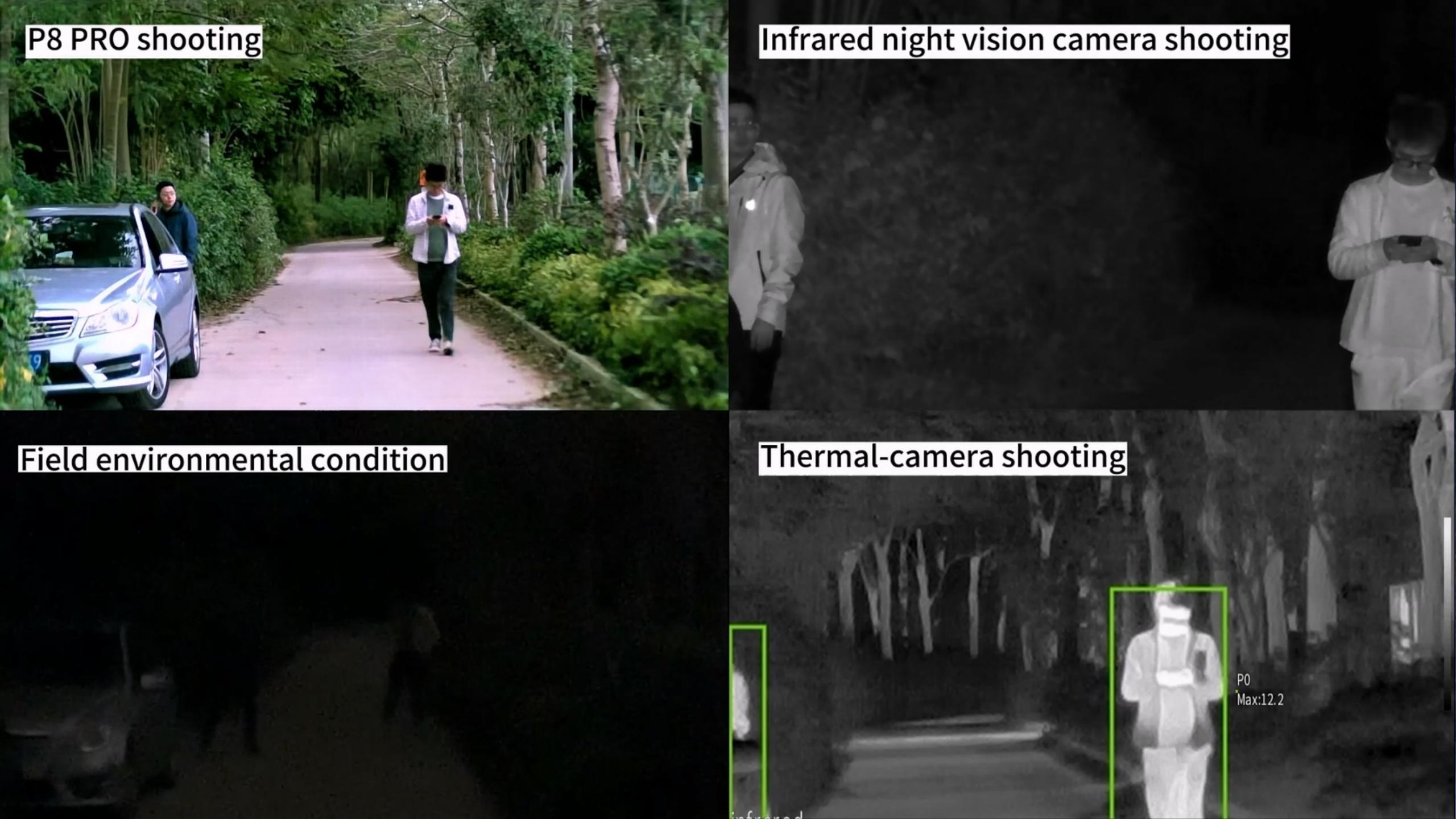
Defogging
ZHIYING® AI ISP defogging uses deep learning algorithms and artificial neural networks to learn the characteristics of fog, identify and remove fog of different degrees in real time, thereby achieving color fog-free image output and achieving high contrast and high clarity of the overall image.
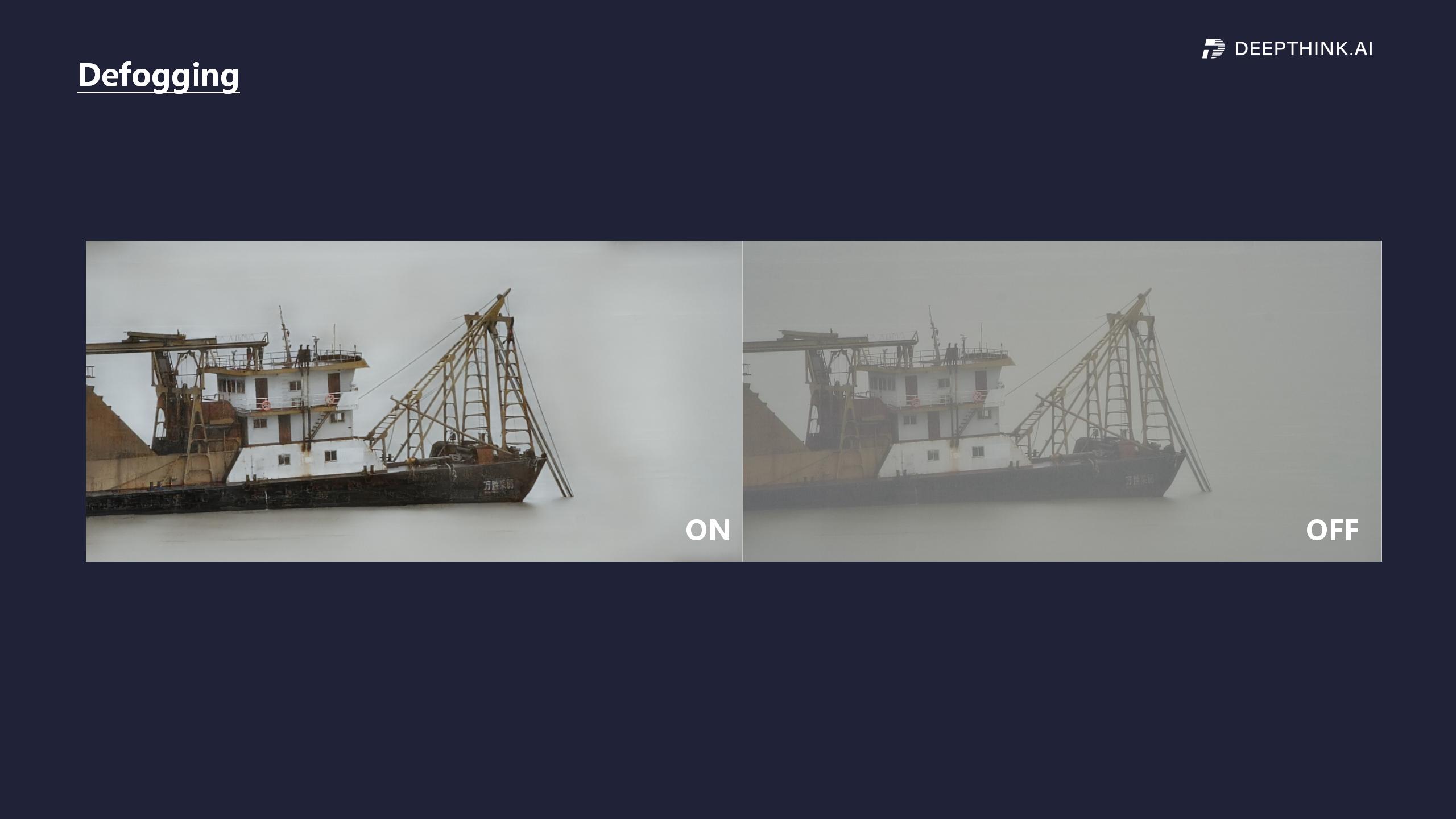
No Smear, Real-Time Processing
Real-time processing is crucial for night vision technology, especially in fast-moving or complex environments.
In night vision scenarios, traditional cameras achieve better imaging results by increasing exposure time or synthesizing multiple frames. ZHIYING® AI ISP can achieve night vision effects without increasing exposure, thereby solving the trailing phenomenon seen in traditional night vision.
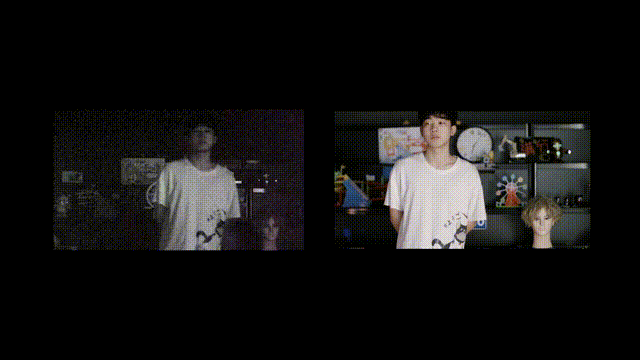
HDR
HDR function typically helps to avoid or reduce overexposure caused by strong light, thereby ensuring the clarity and visibility of the image or field of view.
ZHIYING® AI ISP HDR function can provide clear and excellent imaging even in extreme environments, enabling viewers to better cope with various complex situations.
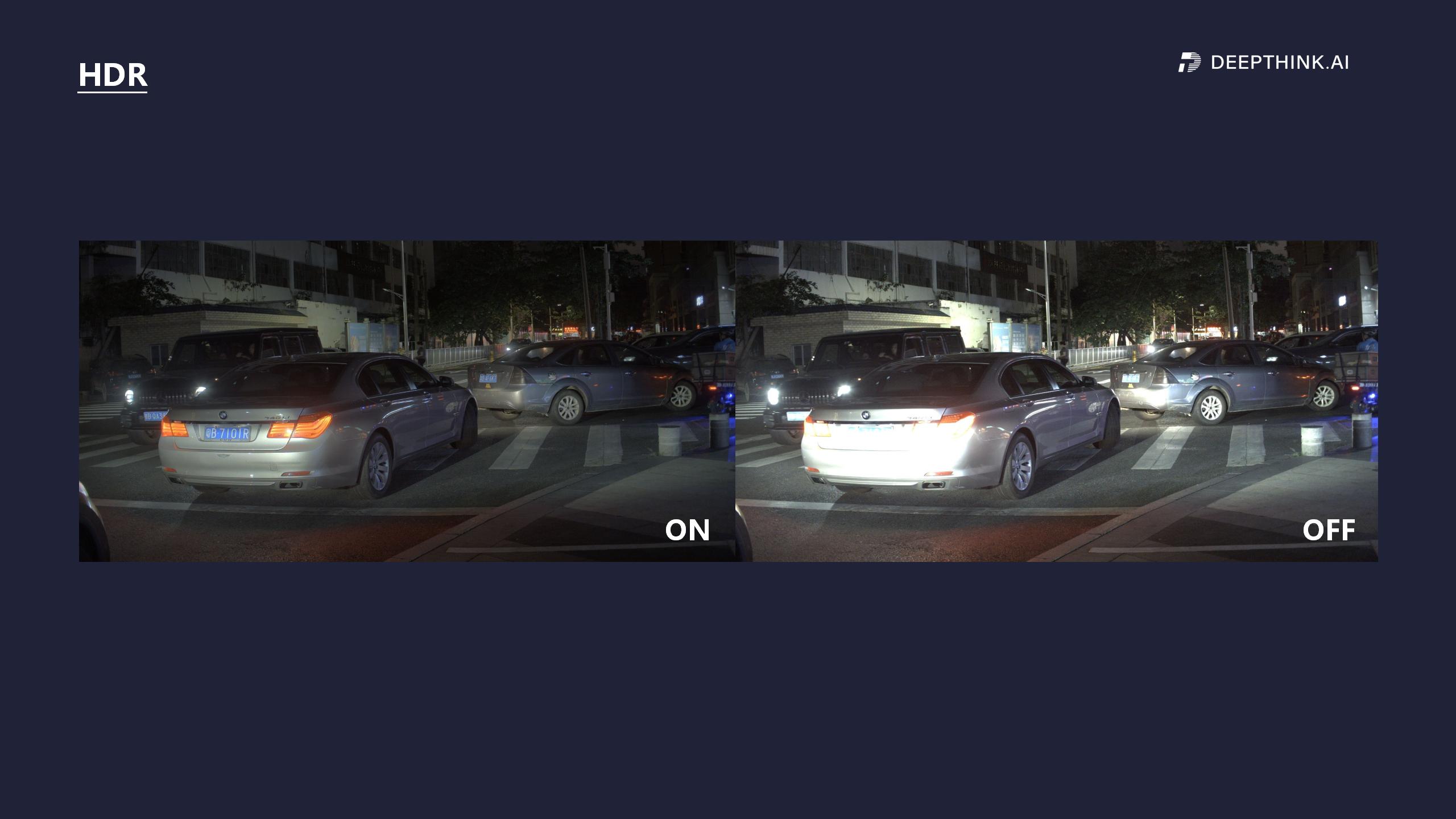
Energy Efficiency Optimization
Night vision technology needs to achieve high performance with low power consumption and cost, posing challenges for hardware design and algorithm optimization.
Traditional technology has disadvantages in high power, overexposure, easy concealment, and loss of color information. Deepthink’s technology does not rely on any fill light, avoiding light pollution. Full color effects show details of objects, meeting human eye observation habits. This achieves end-to-end energy conservation and environmental protection in products.
